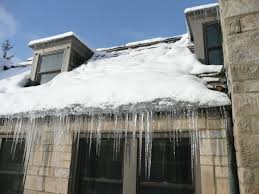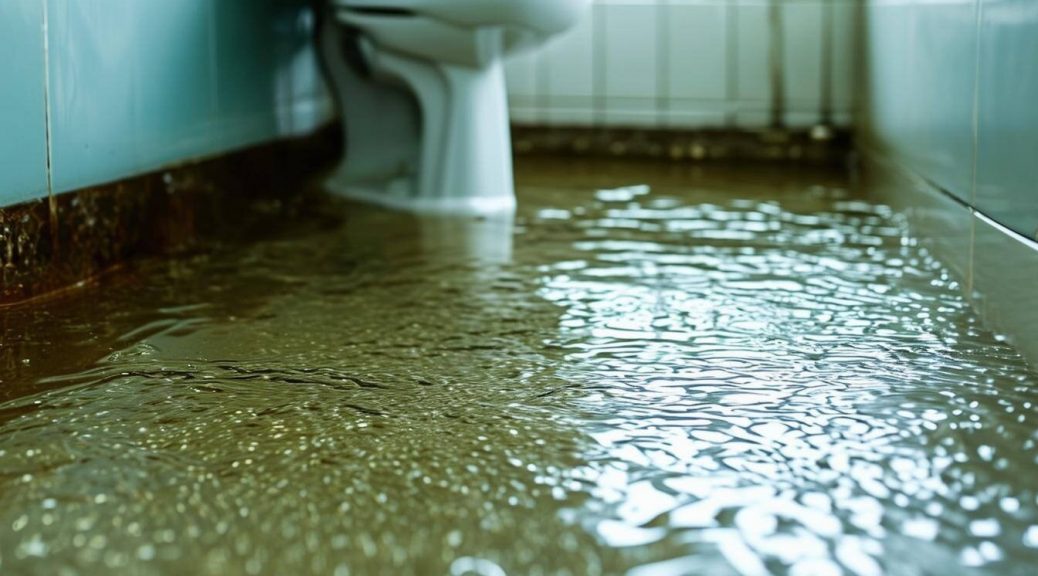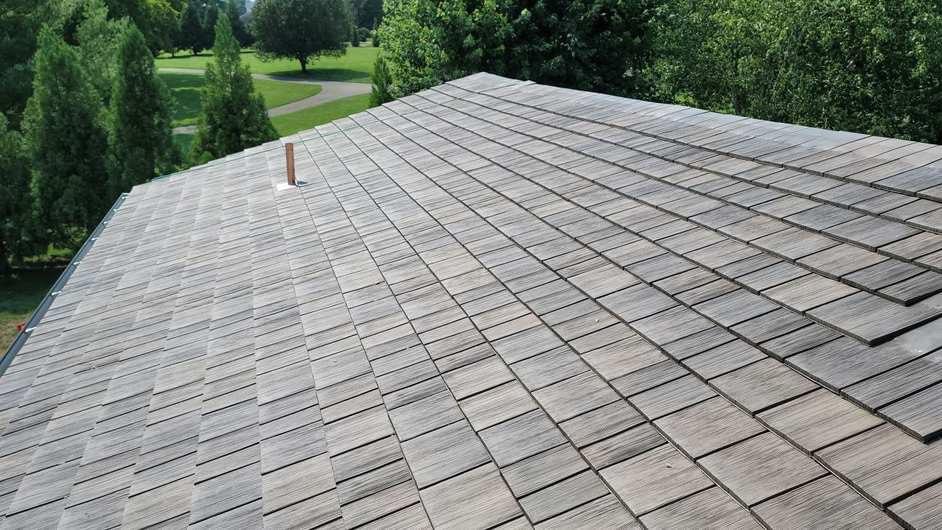Winter’s beauty can quickly turn treacherous when thick ridges of ice begin forming along your roof’s edge, creating a frozen barrier that prevents melting snow from draining properly and forces water to back up under your shingles and into your home. Ice dams represent one of winter’s most destructive and expensive roofing problems, capable of causing thousands of dollars in damage to roofing materials, insulation, ceilings, and walls while creating perfect conditions for mold growth that can persist long after the ice has melted. While many homeowners don’t realize they have an ice dam problem until water starts dripping through their ceilings or icicles grow to dangerous proportions, the most effective approach involves understanding the underlying causes and implementing prevention strategies that eliminate the conditions allowing ice dams to form—rather than waiting until you need an emergency ice dam removal company to address an existing problem that’s already causing damage.
Understanding the Science Behind Ice Dam Formation
Ice dams don’t form randomly or simply because of cold weather—they develop through a specific sequence of conditions that homeowners can understand and control. Recognizing this process empowers property owners to address the root causes rather than just treating symptoms after damage has already occurred.
The Heat Loss Cycle
Ice dams begin when heat escapes from your home’s interior into the attic space, warming the roof deck above the heated portions of your house. This heat causes snow on the upper sections of your roof to melt, creating water that flows down toward the colder roof edges where outdoor temperatures keep the roof surface frozen. When this flowing water reaches the cold edge areas, it refreezes and gradually builds up into the characteristic ice ridge that blocks further drainage.
Critical Temperature Zones
The most problematic ice dam conditions occur when attic temperatures rise above 32 degrees Fahrenheit while exterior temperatures remain below freezing. This temperature differential creates the melting and refreezing cycle that builds ice dams over time. The greater the temperature difference between your attic and the outdoor air, the more rapidly ice dams can develop and the larger they can grow.
Roof Design Factors
Certain architectural features make homes more susceptible to ice dam formation. Complex roof lines with multiple valleys, dormers, and level changes create areas where snow accumulates more heavily and drainage becomes complicated. Low-slope roof sections, particularly those facing north, tend to retain snow longer and experience more severe ice dam problems. Understanding these design vulnerabilities helps homeowners focus prevention efforts on the most critical areas.
Comprehensive Insulation and Air Sealing
The most effective ice dam prevention strategy involves creating a thermal barrier that prevents heated interior air from warming the roof deck. This approach addresses the fundamental cause of ice dam formation rather than attempting to manage the symptoms after they appear.
Attic Insulation Optimization
Adequate attic insulation creates a thermal barrier that keeps heated air in your living spaces rather than allowing it to escape into the attic and warm the roof deck. Current building standards recommend R-38 to R-60 insulation levels for most climate zones, but many older homes have insufficient insulation that allows significant heat transfer. Adding insulation or upgrading existing insulation to current standards dramatically reduces the heat loss that drives ice dam formation.
Air Leakage Elimination
Even with adequate insulation, air leaks can allow warm air to bypass insulation barriers and directly heat roof surfaces. Common air leak sources include recessed lighting fixtures, electrical outlets, bathroom fans, plumbing penetrations, and gaps around chimneys or other roof penetrations. Professional air sealing focuses on these critical areas using appropriate materials and techniques that create lasting barriers against unwanted air movement.
Vapor Barrier Installation
Proper vapor barriers prevent moisture-laden interior air from reaching cold surfaces where it can condense and create humidity problems that complicate ice dam prevention efforts. These barriers must be installed correctly to avoid trapping moisture within building assemblies, making professional installation advisable for optimal performance. Effective vapor barriers work in conjunction with insulation and air sealing to create comprehensive thermal control.
Ventilation System Design and Management
Proper attic ventilation works in conjunction with insulation and air sealing to maintain consistent roof temperatures that prevent the melting and refreezing cycle responsible for ice dam formation.
Balanced Ventilation Principles
Effective attic ventilation requires balanced intake and exhaust ventilation that promotes continuous air circulation without creating pressure imbalances that could interfere with building envelope performance. Soffit vents provide intake air at the lowest portions of the roof, while ridge vents, gable vents, or powered exhaust fans remove air at higher elevations. This circulation pattern helps maintain consistent attic temperatures that mirror outdoor conditions rather than interior heating.
Ventilation Capacity Requirements
Building codes typically require one square foot of ventilation area for every 150 square feet of attic space, with this ventilation split evenly between intake and exhaust locations. However, homes in severe winter climates may benefit from additional ventilation capacity that provides more aggressive temperature control during critical ice dam formation periods. Professional assessment can determine optimal ventilation requirements for specific roof configurations and climate conditions.
Ventilation Obstruction Prevention
Insulation installation must not block soffit vents or other intake ventilation, as blocked vents eliminate the air circulation necessary for temperature control. Proper installation techniques include ventilation baffles that maintain clear air pathways while allowing maximum insulation coverage. Regular maintenance ensures that debris, bird nests, or other obstructions don’t compromise ventilation effectiveness during critical winter periods.
Roof Surface and Drainage Management
While addressing heat loss represents the primary prevention strategy, roof surface management and drainage improvements provide additional protection against ice dam formation and minimize damage when prevention measures aren’t completely effective.
Snow Load Management
Excessive snow accumulation creates the raw material for ice dam formation and increases the potential severity of resulting problems. Roof rakes allow safe removal of snow from roof edges while standing on the ground, reducing the snow load available for melting and refreezing. However, snow removal must be done carefully to avoid damaging roofing materials or creating safety hazards from falling ice or snow.
Drainage System Maintenance
Clean, properly functioning gutters and downspouts help remove melting snow before it can refreeze at roof edges. However, gutters can also contribute to ice dam problems if they become clogged with ice or debris that blocks drainage. Some homeowners choose to remove gutters entirely in areas with severe ice dam problems, allowing melting snow to drain directly off the roof rather than accumulating in frozen gutters.
Heat Cable Systems
Electric heat cables installed along roof edges can prevent ice formation in critical drainage areas, but they represent a treatment approach rather than true prevention. Heat cables require careful installation to avoid fire hazards and must be maintained regularly to ensure safe operation. While heat cables can be effective for specific applications, they increase energy costs and don’t address the underlying heat loss problems that cause ice dam formation.
Professional Assessment and Solutions
Complex ice dam problems often require professional expertise to identify all contributing factors and develop comprehensive solutions that address both immediate concerns and long-term prevention goals.
Thermal Imaging and Analysis
Professional assessment often includes thermal imaging that reveals heat loss patterns and identifies specific areas where improvements are needed. These thermal images show exactly where heated air is escaping into attic spaces and causing roof surface warming that contributes to ice dam formation. This diagnostic information helps prioritize improvement efforts for maximum effectiveness and cost efficiency.
Integrated Solution Design
Effective ice dam prevention typically requires coordinated improvements to insulation, air sealing, and ventilation systems that work together to control roof surface temperatures. Professional contractors can design integrated solutions that optimize performance while avoiding conflicts between different building systems. This comprehensive approach ensures that prevention measures work effectively together rather than creating new problems.
Emergency Intervention Planning
Even with effective prevention measures, extreme weather conditions or equipment failures can sometimes create ice dam problems that require immediate attention. Establishing relationships with qualified ice dam removal companies before problems occur ensures that emergency services are available when needed. Professional removal services possess the specialized equipment and techniques necessary to safely remove ice dams without causing additional roof damage.
Ice dam prevention requires understanding the fundamental causes of ice formation and implementing comprehensive solutions that address heat loss, ventilation, and drainage issues. While prevention requires initial investment in insulation, air sealing, and ventilation improvements, these measures provide long-term protection that far exceeds the cost of repeatedly dealing with ice dam damage and emergency removal services. Proactive prevention protects both your property investment and your family’s comfort throughout even the most severe winter conditions.







